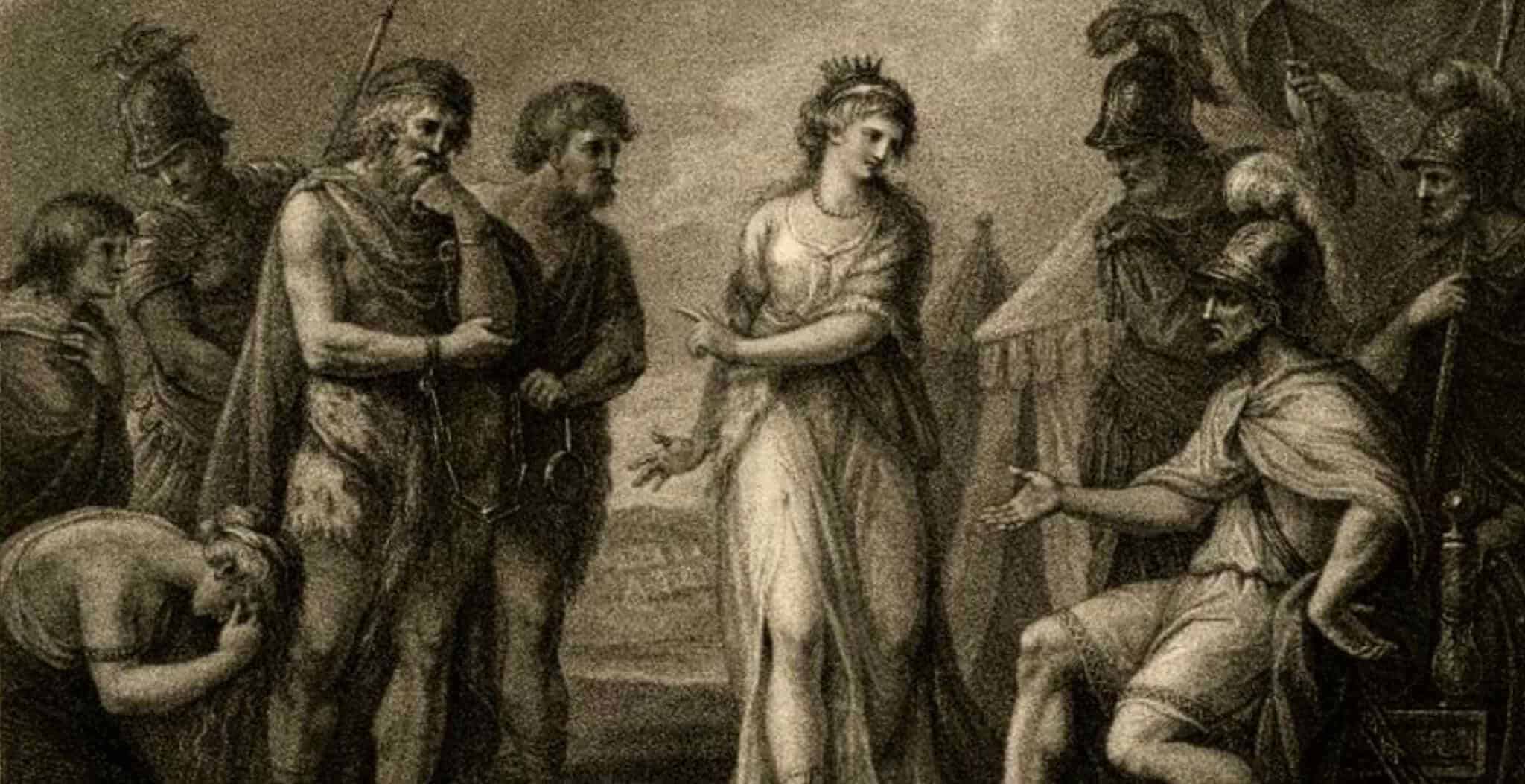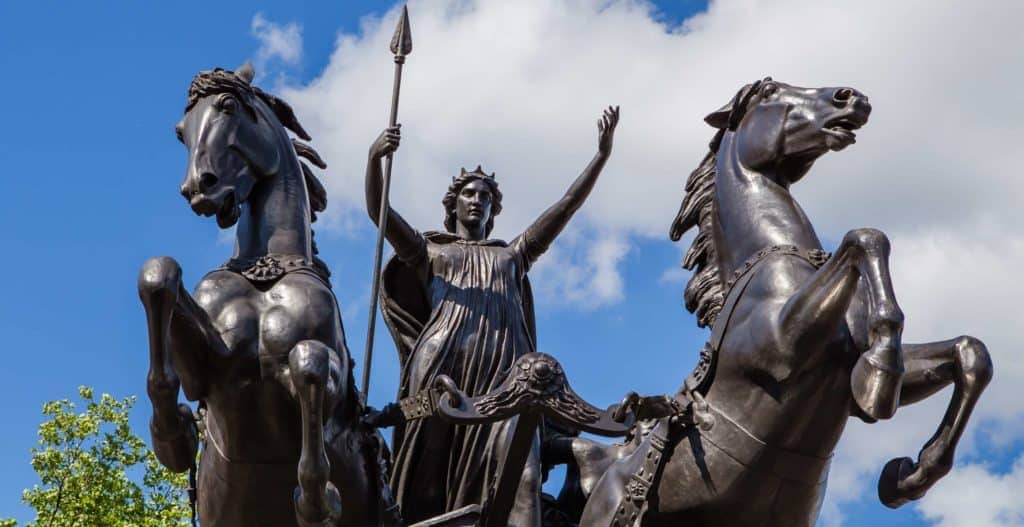Whilst most of us have heard of Boudica (Boadicea), queen of the Iceni in 1st century Britain, Cartimandua (Cartismandua) is less well known.
Cartimandua was also a 1st century Celtic leader, queen of the Brigantes from around 43 to 69AD. The Brigantes were a Celtic people living in an area of Northern England centered on what is now Yorkshire, and were territorially the biggest tribe in Britain.
Granddaughter of King Bellnorix, Cartimandua came to power around the time of the Roman invasion and conquest. Most of what we know about her comes from the Roman historian Tacitus, from whose writings it appears she was a very strong and influential leader. Like many of the Celtic aristocracy and in order to retain her throne, Cartimandua and her husband Venutius were pro-Rome and made several deals and pacts with the Romans. She is described by Tacitus as loyal to Rome and “defended by our [Roman] arms”.
In 51AD Cartimandua’s allegiance to Rome was tested. The British king Caratacus, leader of the Catuvellauni tribe, had been leading the Celtic resistance against the Romans. After successfully launching guerrilla attacks against the Romans in Wales, he was finally defeated by Ostorius Scapula and sought sanctuary, along with his family, with Cartimandua and the Brigantes.

Instead of sheltering him, Cartimandua had him put in chains and handed him over to the Romans who rewarded her with great wealth and favours. However this treacherous action turned her own people against her.
In 57AD Cartimandua furthered angered the Celts by deciding to divorce Venutius in favour of his armour-bearer, Vellocatus.
The scorned Venutius used this anti-Roman sentiment amongst the Celts to incite rebellion against the queen. Much more popular with the people than Cartimandua, he set about building alliances with other tribes, ready to invade Brigantia.
The Romans sent cohorts to defend their client queen. The sides were evenly matched until Caesius Nasica arrived with the IX Legion Hispana, and defeated Venutius. Cartimandua was lucky and narrowly escaped being captured by the rebels, thanks to the intervention of the Roman soldiers.
Venutius bided his time until 69AD when the death of Nero resulted in a period of great political instability in Rome. Venutius seized the opportunity to launch another attack on Brigantia. This time when Cartimandua appealed for help from the Romans, they were only able to send auxiliary troops.
She fled to the newly built Roman fort at Deva (Chester) and abandoned Brigantia to Venutius, who ruled briefly until the Romans finally ousted him.
What happened to Cartimandua after her arrival at Deva is not known.
Excavations during the 1980s at Stanwick Iron Age Fort, 8 miles to the north of Richmond in Yorkshire, have led to the conclusion that the fort was probably Cartimandua’s capital and main settlement. In 1843 a hoard of 140 metal artefacts known as the Stanwick hoard were found half a mile away at Melsonby. The finds included four sets of horse harness for chariots.







